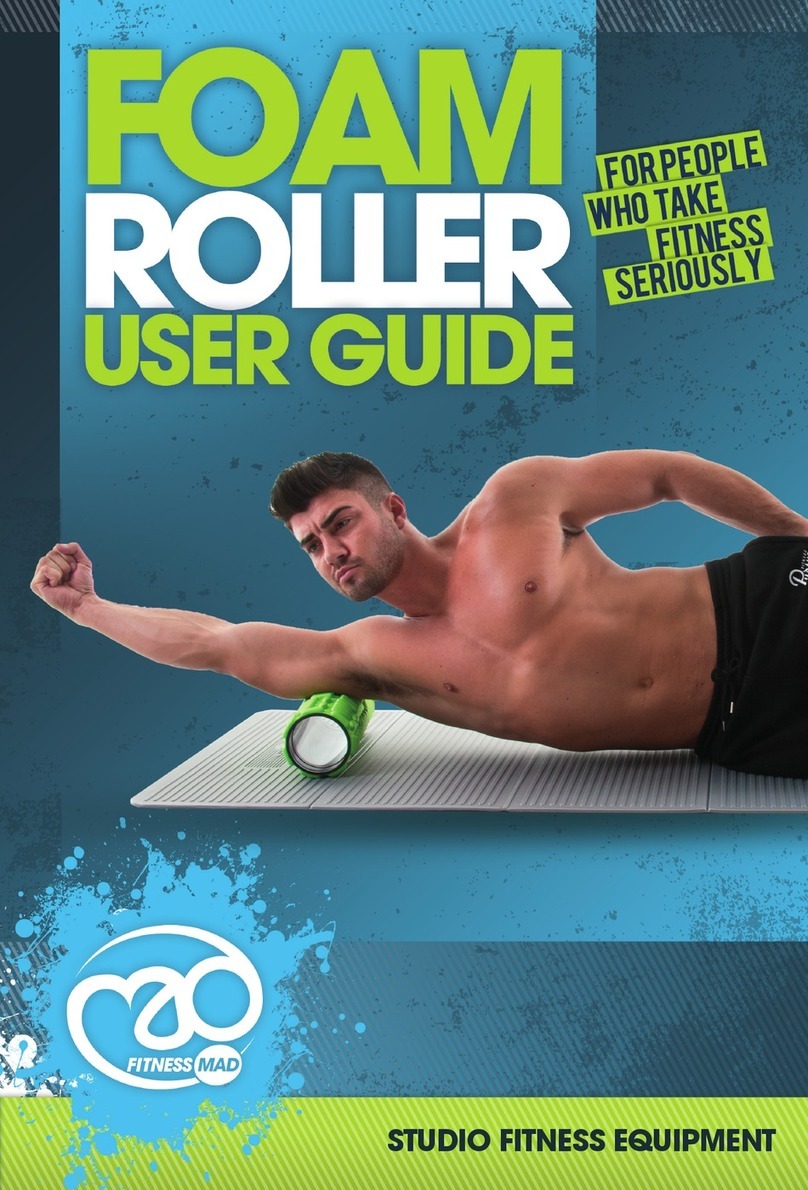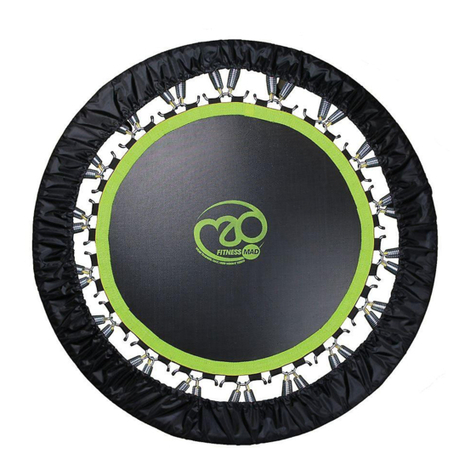3
Using the Door Anchor
Adjusting The Strap Length
Attaching the Anchor Strap Other than to a Door
The Door Anchor dramatically increases the versatility of your Suspension Trainer, however it is vital that the Door Anchor is
only used as described here.
1) Only secure the door anchor from the side of the door which closes towards you i.e. so when exercising you are pulling the
door in the direction in which it closes.
2) Only use on solid doors that are in solid walls - do not use on stud walls or partition walls. Doors must be in sound
condition with working locks. Never use on either glass or sliding doors or any lightweight doors like cupboard doors.
3) Always lock the door when exercising so there is no possibility that someone else can open the door whilst you are
exercising as this may result in serious injury. Check the door is properly locked before starting your workout.
4) Always insert the Door Attachment in the hinge side of the door as illustrated below, ensuring the Door Lock Ring is on the
opposite side of the door to you. Check the Attachment for damage before use, if damaged do not use.
5) Close and lock the door then test the attachment is secure before use.
6) Attach the Suspension Trainer carabiner to one of the eyelets on the door anchor at a height to suit your chosen exercise,
then fine tune the length of the suspension Trainer using the T Fastener Buckles as shown below
The Door Anchor strap can also be attached to many fixed structures so long as they are suitably strong to take your
dynamic load and will not move or tip over when exercising.
1) Do not attach the Anchor Strap around objects that are rough or have sharp edges as these could damage or cut the
Webbing.
2) Wrap the Anchor strap twice around the object you wish to suspend from as in Figure 3, then clip the Door Anchor
carabiner to the closest Anchor Eyelet, ensure the eyelet is not against the carabiner gate.
3) Once securely attached you can clip the Suspension trainer to any of the remaining Anchor eyelets, choosing a height
that best suits your intended exercise - fine tuning can then be done with the T Fastener buckle. Do not clip the Suspension
Trainer on to the same eyelet that is being used by the Door Anchor carabiner.
4) Always test your anchor point before starting to exercise.
There are two ways to adjust the strap length when you are working out. The fastest and easiest way is simply to un clip the
Apex Strap carabiner from the Anchor strap and reattached to a higher or lower point or to the Door Anchor carabiner. When
used with the Door jamb this gives 5 attachment positions and 1.2m of adjustment.
Fig 1. Place door jamb through frame and
close the door on the strap, with
the door closing towards you
Fig 2. Attach the Apex Strap carabiner
to any of the anchor eyelets at a height
suitable for your exercise
Fig 3. Wrap anchor strap twice around
object and clip Door Anchor carabiner
to the closest Anchor eyelet as shown


























